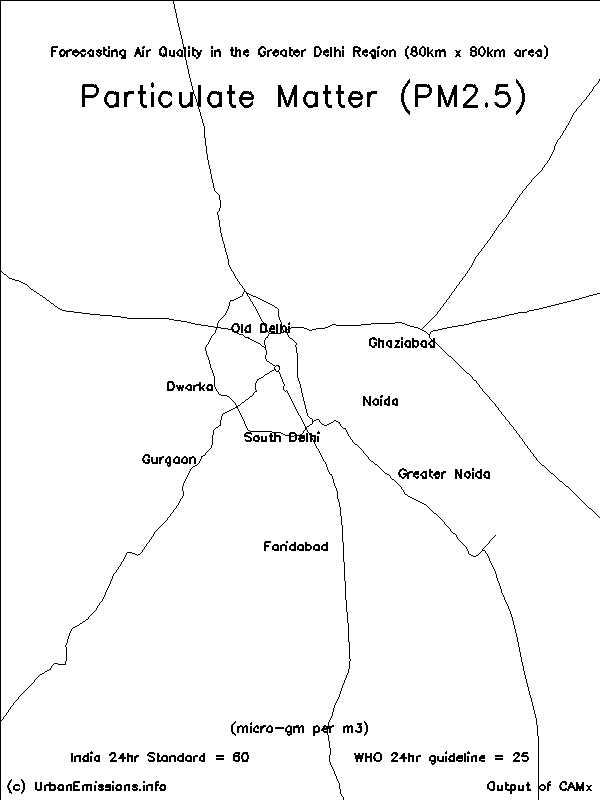 Air pollution has emerged as a major challenge in Delhi (its 9 districts and the neighboring cities) and the problem becomes more complex due to multiplicity and complexity of the mix of emission sources, such as, industries, automobiles, generator sets, domestic fuel burning, road side dusts, construction activities, etc.
Air pollution has emerged as a major challenge in Delhi (its 9 districts and the neighboring cities) and the problem becomes more complex due to multiplicity and complexity of the mix of emission sources, such as, industries, automobiles, generator sets, domestic fuel burning, road side dusts, construction activities, etc.
An effective air quality management requires reliable information on ambient air pollution levels with substantial spatial and temporal coverage. Air quality data are generally available through air quality measurement campaigns; which is also an ideal database to statistically forecast pollution levels in the next 3-4 days, based on past experiences. However, this database is not enough to explain the highs and the lows, source contributions, and spatial patterns in the observed trends. In this regards and in case of lesser number of monitors covering the urban airshed, forecasts based on multi-pollutant chemical transport modeling systems will help (click here for an infographic on why we need an air pollution modeling framework for planning and forecasting).
A vital characteristic of Delhi’s air quality lies in its own air pollution sources, as much as in the pollutants from the neighboring regions through long range transport, including fossil fuels, biomass burning, and seasonal dust. The air quality forecasting can interject the contributions of pollution for national, regional and urban areas, to better support a long-term air quality management plan and a short-term health alert system.
 The forecasting system involves
The forecasting system involves
- Reconstruction of meteorological fields dedicated to urban and regional scale dispersion modeling
- Comprehensive emission inventory of anthropogenic and natural sources, as urban and regional scales. The urban emissions inventory is maintained at 1 km resolution covering the greater Delhi region. The regional emissions inventory is maintained at 25 km resolution covering the Indian sub-continent. The emission fields also include natural sources, such as dust storms, fires, sea salt, lighting activities
- Simulation of dispersion and transformation of pollutants. The simulated results (as concentrations in micro-gm/m3) will be available in multiple tiers
- daily (24 hour) averages
- animations of hourly averages
- hourly time series at the district level
- hourly time series for select locations
- modeled source contributions to hourly PM2.5 concentrations
- A summary page for the Delhi
